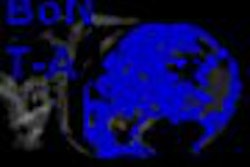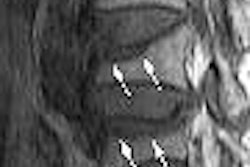Dr. Emanuel Kanal, chair of the American College of Radiology's authoring committee for the "ACR White Paper on MR Safety," has taken issue with our recommendation that the magnet room door swing out. He pointed out an important safety concern that is introduced by swinging the door out, and he is right. But then, so are we.
Dr. Kanal described an incident that occurred several years ago in which he threw himself across the room to tackle a technologist who was attempting to open the latch on an outward-swinging magnet room door when the room behind it was pressurized from a quench breach. The tech was applying his weight to the lever and Dr. Kanal said that he could hear the sound of metal scraping as the latch was slipping out of the catch in the door frame.
Had Dr. Kanal not stopped the technologist, here is what would have likely happened: as soon as the latch was pulled out of the catch, the tremendous force would have blown it open explosively, hurling the technologist across the room or pinning him between the flung-open door and the adjacent wall. In this situation, the opportunity to equalize the pressure in the magnet room through an out-swinging door came at the risk of causing serious injury to the technologist. This is not increasing MR safety, simply shuffling the risks from the patient to the technologist.
The moral of this story is that outward-swinging doors should not be used as the only means of pressure equalization for a magnet room, but should be used as a backup feature, in concert with an emergency exhaust fan and pressure relief/pressure equalization grilles. For one reason, radiofrequency (RF) doors vary widely in design among the shielding vendors. The hinged door in Dr. Kanal's example latched closed, while many other designs utilize roller latches that would yield immediately as the pressure built up inside the magnet room.
If an out-swinging door is your only line of defense without an exhaust fan or pressure transfer grille, once the door is opened the positive pressure from the magnet room will blow all the hazards of the cryogen vapor cloud into the adjacent space, usually a control room. It is for this reason that we recommend the installation of an exhaust fan in the ceiling of the magnet room opposite from the location of the magnet room door. But even with an exhaust fan in the room, there may still be a degree of positive pressure buildup within the magnet room, making in-swinging doors more difficult, if not impossible, to open until the pressure is equalized.
To those facilities who may contemplate ripping out an existing RF door to reinstall it -- don't do that as your only means of entrapment safety! All facilities should have an emergency exhaust fan for its MRI unit, and should also have a means of pressure venting/equalizing. When these elements are in place, the swing of the magnet room door becomes a backup system for pressure equalization and not the first line of defense.
By Tobias Gilk
AuntMinnie.com contributing writer
May 22, 2006
Reprinted from www.mri-planning.com by permission of the authors. If you would like more information on any aspect of MR facility design or safety, please contact Robert Junk or Tobias Gilk at Jünk Architects.
Related Reading
When MRI throughput means more than revenue, April 11, 2006
ECRI's report on MRI safety, March 28, 2006
Doubling down: Raising the stakes of MRI patient safety, March 9, 2006
Ten questions patients should ask their MRI provider: Is this real or is it hype? February 15, 2006
MRI-guided cancer treatment, February 1, 2006
Copyright © 2006 Jünk Architects, PC



















